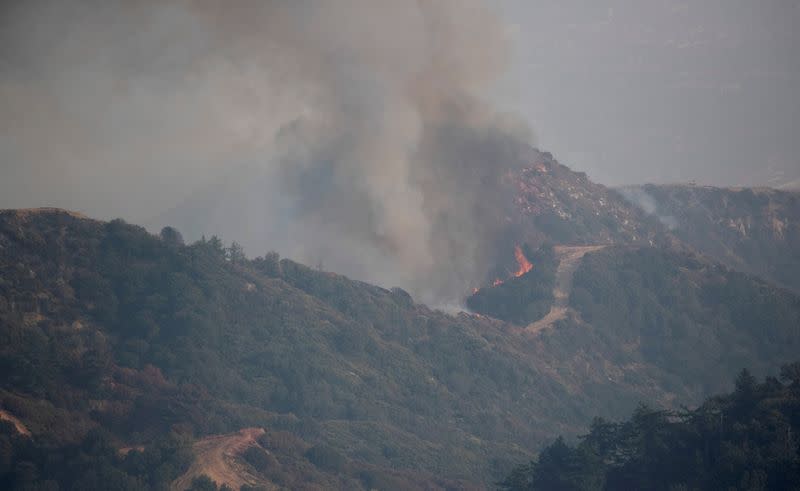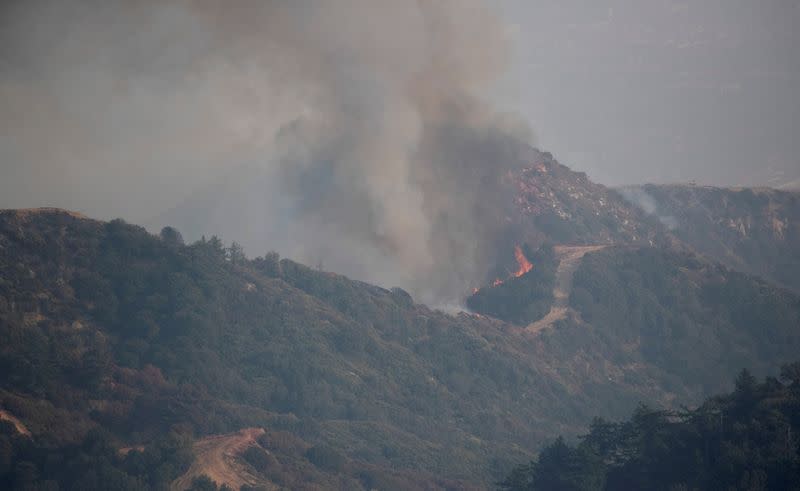California wildfire threatens Mount Wilson Observatory and communications hub
By Steve Gorman
LOS ANGELES (Reuters) - Firefighters waged an all-out ground and air campaign on Tuesday to save the famed Mount Wilson Observatory and an adjacent hub of communications towers from a wildfire roaring through rugged peaks overlooking the foothill suburbs north of Los Angeles.
Flames from the blaze, dubbed the Bobcat Fire, crept to within just 500 feet (152 meters) of the evacuated observatory grounds during the day, said David Dantic, a spokesman for the Los Angeles County Fire Department.
The fire has scorched some 41,000 acres of the San Gabriel Mountains since erupting on Sept. 6, belching smoke and ash over much of the greater Los Angeles area for over a week and forcing evacuations of several communities at the foot of the mountains.
The blaze was one of dozens of wildfires that broke out during the Labor Day holiday weekend, stoked by a late-summer heat wave that baked much of the U.S. West Coast.
As of Tuesday, no structures had been lost, but forest crews had managed to carve containment lines around less than 5% of the Bobcat's perimeter while flames edged closer to Mount Wilson on the fire's western flank.
Ground crews fought with hand tools and bulldozers to fend off flames from the observatory while a squadron of four water-dropping helicopters continually doused the blaze from the air, Dantic said.
50 BUILDINGS
The 5,700-foot summit at the southern end of the Angeles National Forest is home to about 50 buildings in all, plus an array of telescopes used by some of the leading astronomers of the 20th century, as well as a cluster of broadcast transmission antennae.
The observatory was founded in 1904 by George Ellery Hale, who used a 60-inch telescope on the site in the discovery of the sun's magnetic fields.
It was also home to Edwin Hubble, who used the 100-inch Hooker telescope in the 1920s to view distant galaxies and develop his theory of the expanding universe. That, together with Albert Einstein's theory of general relativity, led to the Big Bang theory of a cosmos created at a specific point in time.
A later collection of laser-based infrared instruments built at Mount Wilson by Nobel-winning physicist Charles Townes were used to measure the diameter of stars that appear as mere points of light in most optical telescopes.
The facility was nearly engulfed in flames in 2009 by a much larger blaze called the Station Fire but was spared after a pitched battle waged by firefighters to spare the site.
(Reporting by Steve Gorman in Los Angeles; Editing by Bill Tarrant and Christopher Cushing)




